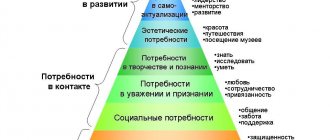We all grew up on fairy tales. There is probably no person whose childhood is not associated with fairy tales. For thousands of years, fairy tales, legends, epics, and myths have been passed on from mouth to mouth. It is interesting that times change, but the tradition of telling fairy tales does not disappear. Our ancestors, raising children, told them fairy tales as instructive stories. Since the middle of the 19th century, the fairy tale has become the object of research by philologists and linguists, and a little later psychologists turn their attention to it. For example, Carl Gustav Jung and his followers believed that fairy tales encrypted certain codes of human relationships, conflicts, and universal archetypes of the collective unconscious. A fairy tale helps resolve archetypal conflicts and bring tension outward. The ability of a fairy tale to heal the soul was noticed by the healers of the Ancient East, who used it in practice. Thus, telling fairy tales can be called the most ancient method of practical psychology, used intuitively by humanity.
But the modern scientific method “ Fairytale therapy ” is quite young. As a separate direction of psychotherapy, it originated more than 20 years ago in St. Petersburg, where the Institute of Fairytale Therapy opened in 1998 (now its legal successor is the International Institute of Integrated Fairytale Therapy). The author of the method is considered to be Tatyana Dmitrievna Zinkevich-Evstigneeva. The idea of creation arose in the search for a softer and more delicate method of psychological assistance for both children and adults. This is how the idea arose to “package” ordinary psychological techniques into a fairy-tale package. Fairy tales are keepers of information. All the emotional experiences and difficulties that a person faces in his life are not new, all this has already happened countless times with other people at all times. And the experience of solving many problems, the experience of human relationships and solving difficult life situations is encrypted in fairy tales. And all that remains for psychologists and fairy tale therapists is to unravel these codes and teach people to use the knowledge they have acquired.
Fairytale therapy is a branch of art therapy (art treatment) that uses fairy tales to solve an individual’s psychological problems. It is used in their work not only by psychologists and psychotherapists, but also by educators, teachers, doctors and even directors, actors, artists and writers.
Fairytale therapy can be called the most child-friendly method of psychological assistance, since its impact is aimed at the child who lives inside each of us. The peculiarity of the method is that it has practically no age restrictions - you can start working with your child as soon as he begins to understand spoken speech (from one to one and a half years old). Fairytale therapy is most often used to work with children and adolescents, however, it is also suitable for adult clients. The fairytale therapist acts gently and unobtrusively, he does not teach or instruct, but at the same time, using examples of fictional fairy-tale characters, he helps the child understand simple human truths, understand what is good and what is bad, sets the right psychological attitudes, helping to cope with the problem, find a way out of a difficult situation, without voicing it directly, but by modeling it in a fairy-tale narrative.
For a child, a fairy tale is a way of learning. With the help of fairy-tale images, metaphors, plots, he gets acquainted with the world around him and the relationships between people. At the same time, fairy tales are understandable, listening to them is interesting and exciting, they develop thinking, analytical skills, imagination, and teach them to find ways out of any life situations.
The range of problems that can be solved or corrected with the help of fairy tale therapy is quite wide, here are just a few of them:
- various kinds of fears, phobias;
- psychosomatic disorders;
- hyperactivity, anxiety;
- behavioral disorders;
- stuttering;
- problems with self-esteem;
- neurotic disorders (enuresis, encopresis, sleep, appetite, speech disorders);
- aggressive behavior, irritability;
- children's whims;
- depression;
- problems with socialization, communication, adaptation in a team (for example, when moving from kindergarten to school);
- sibling rivalry;
- experiencing loss (of loved ones or pets);
- problems of a child suffering from a negative psychological climate in the family.
Depending on the situation, the fairytale therapist can use some well-known fairy tale in his work, or compose it together with the child, or invite the client to come up with it on his own.
The main functions of fairy tales:
- transferring to the child certain knowledge, skills, and abilities (for this there are so-called didactic fairy tales. At the end of such a fairy tale there is an easy task for checking and repeating the information received);
- influence on the formation and development of personality, the formation and strengthening of its qualities;
- correction of an existing psychological problem (the task of the fairytale therapist is to first show an ineffective way out of a difficult situation, and then point out existing alternative methods. After reading a fairy tale, a discussion of what was heard plays a very important role; it is necessary for the client to speak out first);
- impact on the human psyche, providing support in a difficult psychological situation, strengthening self-confidence (for these purposes, epics, parables or legends are used, filled with the wisdom of generations in matters of relationships between people and a person with the world);
- stress relief (achieved with the help of meditative fairy tales. The specialist needs to captivate the listener, completely relax him and lead him into a fairy-tale world, literally immersing him in his story. Such fairy tales act directly on the unconscious).
DEFINITION
Fairytale therapy is a method of psychological correction that helps develop a harmonious personality and solve individual problems. The instrument of this therapy is a fairy tale, which allows, using the example of heroes, to trace the characteristics of behavior and actions, and to analyze a specific life situation.
Fairytale therapy began to be used in isolation relatively recently, but quickly found a large number of fans among professional psychotherapists and parents. It was identified as a separate branch of psychotherapy thanks to Tatyana Zinkevich-Evstigneeva, and was later successfully used in working with both children and adults.
The essence of the method is this: the experience of conflict occurs with the help of a system of substitutes - fairy-tale characters, in whose place the child (or adult) begins to imagine himself. The plot is also important. Due to its metaphorical nature, a fairy tale becomes a powerful developmental and psychotherapeutic tool. By living certain events with the characters, the baby learns to understand their meaning and significance.
The goal of therapy is to help the child overcome anxiety and fears, correct negative character traits, and reveal abilities and inner world.
The following tasks can be distinguished:
- formation of emotional experience;
- overcoming internal contradictions;
- obtaining a sample of behavior in various situations.
Often a fairy tale becomes a means of developing personality, imagination, memory
BEST AGE
Experts advise starting to use fairy tales from the age of 2, since younger children are not yet able to carry out the simplest analysis and understand cause-and-effect relationships, that is, the work will be ineffective. And from the age of 2, it is quite possible to use simple therapeutic fairy tales to help calm the child, prevent hysteria, and provide an example of positive behavior.
At the age of 3, fairy tale therapy can be used more actively, including in combination with other art therapy methods.
DIRECTIONS
It is customary to distinguish several areas of fairy tale therapy:
- Help in difficult life situations. Using the characters as an example, you can consider alternative behavior options and reflect on what consequences each of them leads to.
- Identifying the problem the child is facing in a simple and accessible form.
- Transfer of experience. The parent does not teach the child, but shares with him his life experience and knowledge through a fairy tale.
- Development of thinking, imagination, memory. The form of work is used with children from 3 years old; parents offer not just to listen to the text, but to answer a series of questions, speculate on something, and explain the actions and characters of the characters.
- Behavior correction. With the help of heroes, the child looks at himself from the outside, sees his own negative qualities, as well as an example of how to correct them.
- Psychoprophylaxis. It is always better to avoid a problem than to fix it, and a fairy tale is a very convenient way to do this.
The advantage of fairy tale therapy is that it helps solve a wide range of problems in both children and adults.
FUNCTIONS
It is customary to distinguish the following functions of fairy tale therapy:
- The ability to quickly establish contact between the therapist and the client, regardless of the latter’s age.
- Many mental problems are hidden deep in the subconscious. A short text from a fairy tale helps to bring them to the surface and analyze them.
- Heroes will help you find a way out of difficult situations and consider alternatives.
- Fairy tales allow you to better understand yourself and get rid of internal contradictions.
- This text allows the therapist to receive all the information, even if the client (usually an adult) is trying to hide something.
Fairy tales are an excellent way to overcome phobias; they will also help to instill the skills necessary for a full life, provide an opportunity to understand what is good and what is evil, to reveal the individuality of one’s own personality, and to overcome life’s difficulties. And, what’s most convenient, parents can use this method even without professional education.
Recommended books
- Gnezdilov A. V. Author's fairy tale therapy.
- Zinkevich-Evstigneeva T. D. Workshop on fairy tale therapy.
- Kozlova E. G. Fairy tales and tips. Problems for a math club.
- Lomakina G. Fairy tale therapy.
- Prokhorov V., Rubanova S., Otradnova A. The healing power of fairy tales.
- Sakovich N. A. Practice of fairy tale therapy.
- Sokolov D. Fairy tales and fairy tale therapy.
- Stishenko I.V. Fairytale therapy for solving personal problems.
- Tkach R. M. Fairytale therapy for children's problems.
- Tkacheva T. Psychotherapeutic fairy tales for adults and children.
In the above books you can find examples of fairy tales and methodological recommendations on how best to use them in working with adults and children. Despite the fact that not all psychologists share the enthusiasm for the effectiveness of this trend, it is incredibly popular all over the world and over 20 years has helped tens of thousands of people find harmony in their souls and get rid of phobias.
TYPES OF FAIRY TALES
Let's get acquainted with the classification of fairy tales proposed by Zinkevich-Evstigneeva. The information is presented in table form.
| Fairy tale form | a brief description of |
| Artistic | These are traditional, in our understanding, folklore and original fairy tales, the plot of which may contain elements of other forms. |
| Didactic | Created by teachers for simplified presentation of educational material. It is most often used in working with preschoolers and primary schoolchildren, while teenagers are encouraged to write such texts. |
| Meditative | They help you relax and relieve psycho-emotional stress through the accumulation of positive experience. Often reading is accompanied by listening to soothing music or sounds of nature. |
| Psychotherapeutic | They help you understand the events of the world around you, they are often very insightful, aimed at personal growth, and allow you to see positive aspects and qualities. |
| Psychocorrectional | In an unobtrusive form they influence behavior, most often used in relation to adolescents 11-13 years old and adults, they help solve problems of aggressive and ineffective behavior. It is not necessary to discuss or act out such a fairy tale; often it is enough to let it be read and thought about on your own. |
The genres used in such therapy are diverse; they are not always fairy tales. Here are the main ones:
- epics, myths, legends, sagas - these 4 genres are best suited for working with teenagers;
- fables (the moral is formulated quite clearly; you can use texts not only by Krylov, but also by Aesop and La Fontaine);
- parables (often contain important life lessons, are dedicated to a specific problem and can be used to work through it).
Sometimes it is acceptable to use modern genres, for example detective stories, science fiction - the main thing is that the genre matches the child’s taste.
Principles and methods of work of a fairytale therapist
The fairytale therapist builds his work with children in accordance with the principles:
- the story must be emotional;
- the child, while listening, should see the narrator’s facial expression, his emotions and gestures;
- you need to tell a fairy tale in an even, melodious voice, using repetitions;
- the tale should not contain too long pauses;
- the story should imply the likelihood of several possible solutions and answers to questions;
- current problems are encrypted in the text using images and metaphors;
- heroes must be clearly positive and clearly negative;
- While reading, it is necessary to monitor the behavior and emotions of the listener and be able to correctly interpret them.
You can fully study all the effective methods and techniques of fairy tale therapy on our distance professional retraining course. You will not only acquire useful knowledge, but also gain the right to apply it in the practical work of a psychologist.
VARIOUS FAIRY TALE THERAPY METHODS
Working with fairy tales can be combined with other forms and methods of art therapy, which will help not only correct the child’s behavior, but also arouse his keen interest and improve his mood.
So, first of all, sand therapy is harmoniously combined with a fairy tale. Sand can become a kind of environment for recreating a magical world. While playing with sand, the child creates his own reality, in which he feels comfortable and happy; during the game, thanks to the so-called “fairy-tale intuition”, the child manages to find a way out of a difficult situation.
Drawing a fairy tale is one of the methods of fairy tale therapy. Using pencils, paints, even plasticine or clay, the child expresses his own emotions about the text he heard. Another form of work is independent writing (composing) of a fairy tale, in which the child can completely come up with the text, propose an alternative scenario for the development of events in a ready-made fairy tale, and figure out what happened after the conclusion - for example, how the fates of the heroes of “Teremka” turned out or what they began to do the old man and the old woman from “The Tale of the Goldfish”, once again finding themselves “at the bottom.” This will be interesting for preschoolers aged 5-6 years and older children.
The next option is dramatization, staging of fairy tales, their staging, which helps children more deeply get used to the character’s image and enrich their emotional and behavioral experience. At the same time, you should avoid tedious memorization of the role and strict adherence to the text - in such classes, improvisation is much more important. It is this form of work that will help you realize your own shortcomings using the example of the character being portrayed, find out how you can overcome them, and do it.
Staging puppet shows is also useful, allowing you to develop your child’s speech, imagination, communication skills and fine motor skills. In order to “revive” the doll, the child observes certain forms of behavior from the outside, sees what they lead to, and draws his own conclusions. Also, in the process of doll therapy, he gets the opportunity to express those feelings and emotions that are inaccessible to him in real life or are suppressed. Older children (6 or 7 years old) can be encouraged to make dolls themselves, a process that helps them relax.
Another technique is the “master of fairy tales” proposed by Zinkevich-Evstigneeva. According to the author, there are 10 main archetypes (for example, a road, a state, a crossroads), using which you can create 50 fairy-tale plots, which is what the child is asked to do. “Master of Tales” is a deck of 50 cards, each of which has its own meaning. Using them, you can create your own oral works.
These methods are easy to use in homework; in this case, mothers and fathers and other relatives become spectators of “theatrical” productions or puppet theaters.
TIPS FOR PARENTS
With the right approach, using fairy tales you can solve the following problems:
- laziness;
- sloppiness;
- deception;
- aggression;
- reluctance to go to kindergarten.
In case of serious phobias or the appearance of a new family member, it is better to seek the help of a professional.
Let's look at how a mother can use elements of fairy tale therapy at home for her preschooler. Often, it is not enough for a child to simply listen to the text of a fairy tale. It is important that his parents discuss it with him and help him understand the lessons that the plot and characters provide.
By reflecting with your son or daughter on each fairy tale you read, you can form a so-called “bank of life situations” - that is, what you can and cannot do in various cases. The more often such discussions occur, the faster the child will gain the necessary life experience. In this way, the parents will prepare him for an independent future life and help him form a value system.
If a child asks his mother to tell the same fairy tale several times, the request should be fulfilled, since she speaks of the importance of this story for the baby.
WHICH TALES TO CHOOSE?
Let's look at examples of fairy tales and requirements for them. For preschoolers and children 7 years old, the following options are suitable:
- household (“Ryaba Chicken”, “Kolobok”, “Porridge from an Axe”);
- magical (“Morozko”, “Puss in Boots”);
- heroic (“Dobrynya and the Serpent”, “Ilya Muromets”);
- instructive (“The Fox and the Crane”, “Goldfish”).
These can be both oral folk and original works. The main thing is that they meet the following requirements:
- The characters were understandable and interesting to children. An excellent option if the actor is a peer. Age specifics should also be taken into account: for 2-3 years old, animal heroes are preferable; at 4 years old, an element of magic should be introduced; at 5 years old, fairy tales already become the main ones.
- Characters should be clearly divided into positive and negative. Due to their age, it is still difficult for children to judge that an honest and kind person in certain circumstances does not always act well. Therefore, everything in the selected material should be accessible and unambiguous.
- The text itself should be chosen that is interesting to the child, close to him in subject matter and hobbies.
- The topic must be relevant. The lesson is conducted for a specific purpose, to solve some problem of the child (aggression, shyness, phobias), the material must be selected in such a way as to highlight these aspects.
- Availability of interchange. The problem must be solved, since this is the only way the child will receive a specific algorithm of action.
If she has imagination, mom can write a fairy tale herself, but you can use ready-made works by psychologists.
LESSON STRUCTURE
When conducting a fairytale therapy class, the following elements must be present:
- An immersion ritual that helps create the necessary mood. This could be listening to a cheerful tune that your child loves.
- Getting to know the text. It is advisable for the mother to tell a fairy tale; if this is not possible, expressive reading or listening to an audio recording with professional speakers is acceptable.
- Discussion. A conversation about what has been heard, allowing you to understand the lesson of the text, evaluate the actions of the characters, and identify the cause-and-effect relationship “action-consequence”.
- Art therapeutic element. Drawing heroes, creating a fairy-tale world in a sandbox. It is best to use a child's favorite activity.
- Exit ritual. Close your eyes, count out loud to three and leave the fairy-tale world, find yourself in the real one.
- Summarizing. A short summary of what was learned in class. At this stage, it is very important to avoid the use of moralizing by an adult, imposing the “correct position”.
The structure is not mandatory; you can modify it if desired. Such classes can be conducted both individually and in group form.
SOLVING SPECIFIC PROBLEMS
Let's consider how a mother can use fairy tale therapy to solve a number of important problems in the upbringing and development of a child.
| Problem | A fairy tale aimed at solving it |
| Eating whims, refusal of healthy foods | A fairy tale from the perspective of vegetables who talk about their own benefits. You can also include here a monologue of candy, which will appear as a negative character and talk about the harm it brings. |
| Sloppyness, the child does not see the point in order and does not want to keep his things clean | A fairy tale about a country of slobs, whose inhabitants do not maintain cleanliness and order. This leads to problems and difficulties (they cannot find the right thing at a crucial moment, the necessary magic item turns out to be broken or dirty). |
| The child is aggressive and often hits younger children for no reason. | A fairy tale about a bear cub, who wanted to show everyone that he was big and strong, offended other animals. As a result, no one became friends with him. One day he came to the aid of the little bunny and realized that his strength should be used for good, helping the weak. |
| The child is unsure of himself, timid, and is considered physically weak | The fairy tale “The Oak and the Blade of Grass” will help: in the clearing there grew a mighty oak tree and a thin blade of grass, which even the smallest gust of wind pressed to the ground. The oak tree laughed all the time at the weak blade of grass, but it grew, not paying attention to the ridicule. One day a hurricane passed through, so powerful that it uprooted an oak tree, and a blade of grass, although bent to the ground, was not damaged. |
The second option for working with fairy tales is texts dedicated to a specific child. As a rule, children are very interested in hearing about themselves. In such fairy tales, the baby is endowed with certain character traits that the parent wants to instill in him. For example, if a baby categorically refuses to go to bed in the dark, in the plot of the fairy tale he should appear as a brave hero who is not afraid of the night.
Fairytale therapy is a gentle method of psychotherapy that allows you to solve serious problems in a gentle manner. It is available for use at home. The main difficulty is the correct choice of material. This issue should be approached responsibly; if desired, you can compose a fairy tale yourself. This method is ideal for children, since the work is carried out on material accessible to preschool age, which, however, does not reduce its effectiveness.










